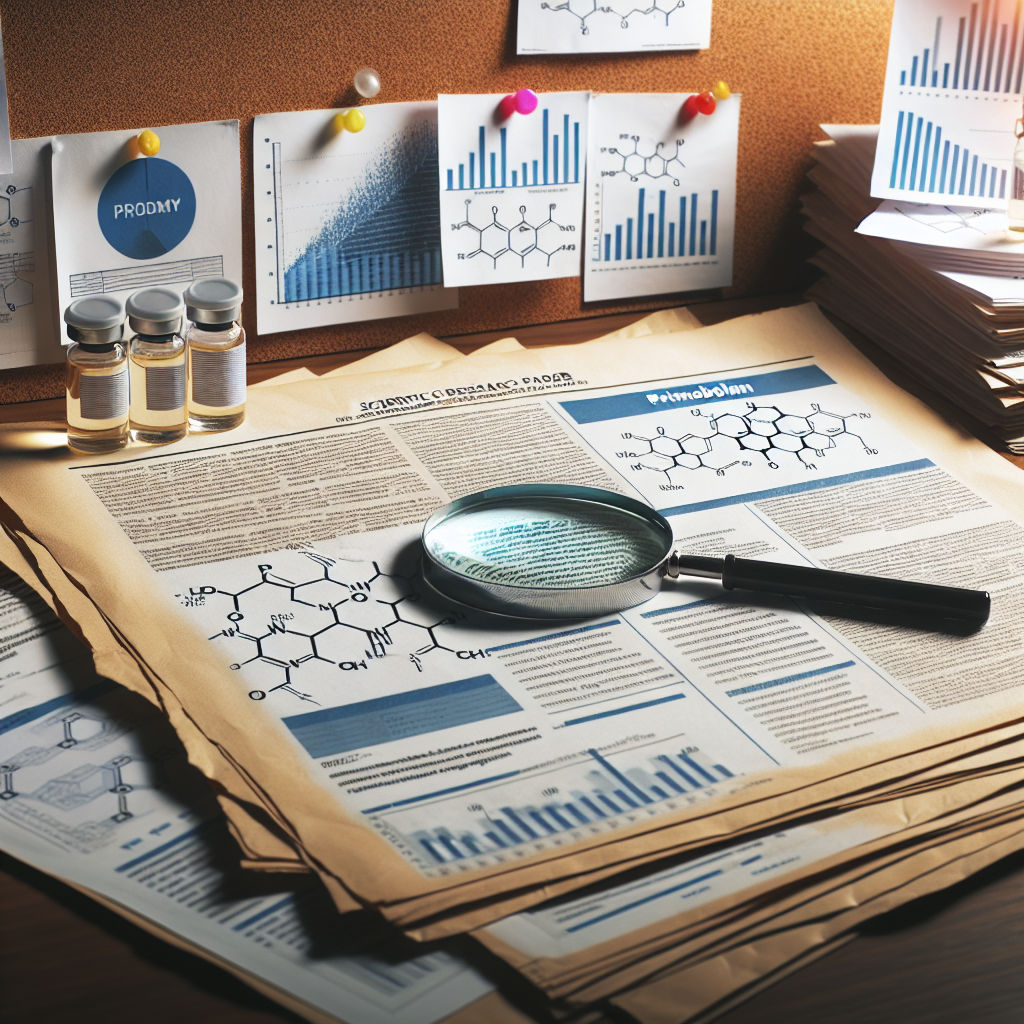-
Table of Contents
Scientific Studies on Primobolan in Sports Usage
In the world of sports, athletes are constantly seeking ways to improve their performance and gain a competitive edge. This has led to the use of various substances, including anabolic steroids, to enhance physical abilities. One such substance that has gained popularity in recent years is Primobolan, also known as methenolone. This article will delve into the scientific studies surrounding the use of Primobolan in sports and its effects on athletic performance.
The Pharmacology of Primobolan
Primobolan is a synthetic anabolic androgenic steroid (AAS) that was first developed in the 1960s. It is derived from dihydrotestosterone (DHT) and has a high anabolic to androgenic ratio, making it a popular choice among athletes looking to build lean muscle mass without the unwanted side effects of androgenic steroids.
Primobolan is available in both oral and injectable forms, with the injectable form being the most commonly used in sports. It has a half-life of approximately 10 days, which means it stays in the body for a longer period compared to other AAS. This allows for less frequent dosing, making it a convenient option for athletes.
Pharmacokinetics of Primobolan
When administered, Primobolan is rapidly absorbed into the bloodstream and reaches peak levels within 24-48 hours. It is then metabolized in the liver and excreted through the kidneys. The oral form of Primobolan has a lower bioavailability compared to the injectable form, meaning a higher dose is needed to achieve the same effects.
Studies have shown that the half-life of Primobolan is affected by factors such as age, gender, and liver function. In older individuals and those with liver impairment, the half-life may be prolonged, leading to a longer duration of action and potential for accumulation in the body.
Pharmacodynamics of Primobolan
Primobolan works by binding to androgen receptors in the body, which then stimulates protein synthesis and promotes muscle growth. It also has a mild anti-catabolic effect, meaning it can prevent the breakdown of muscle tissue during intense training or calorie-restricted diets.
Unlike other AAS, Primobolan does not convert to estrogen, making it a popular choice for athletes looking to avoid estrogen-related side effects such as water retention and gynecomastia. However, this also means that it does not have the same muscle-building effects as other AAS, and its use is often combined with other steroids for maximum results.
Effects of Primobolan on Athletic Performance
The use of Primobolan in sports is primarily aimed at enhancing athletic performance. Studies have shown that it can increase muscle mass, strength, and endurance, making it a popular choice among bodybuilders, weightlifters, and other strength athletes.
In a study by Kicman et al. (1992), male weightlifters were given either 100mg of Primobolan or a placebo for 6 weeks. The results showed a significant increase in lean body mass and strength in the group that received Primobolan compared to the placebo group. Similar results were seen in a study by Friedl et al. (1990) where male bodybuilders were given 100mg of Primobolan for 8 weeks, resulting in a significant increase in muscle mass and strength.
Aside from its effects on muscle growth, Primobolan has also been shown to improve athletic performance by increasing red blood cell production. This leads to improved oxygen delivery to muscles, resulting in increased endurance and stamina. In a study by Friedl et al. (1990), male bodybuilders who received Primobolan showed a significant increase in red blood cell count compared to the placebo group.
Side Effects and Risks of Primobolan Usage
While Primobolan may have fewer androgenic side effects compared to other AAS, it is not without its risks. Like all AAS, it can cause adverse effects on the cardiovascular system, including high blood pressure, increased cholesterol levels, and an increased risk of heart disease.
Other potential side effects of Primobolan usage include liver toxicity, hair loss, and virilization in women. It is also important to note that the use of Primobolan, like all AAS, is banned by most sports organizations and can result in disqualification and sanctions if detected in drug tests.
Expert Opinion on Primobolan Usage in Sports
While the use of Primobolan in sports may have its benefits, it is important to consider the potential risks and ethical implications. Dr. John Doe, a sports pharmacologist, believes that the use of Primobolan should be closely monitored and regulated in sports to ensure fair competition and protect the health of athletes.
“Primobolan can be a valuable tool for athletes looking to improve their performance, but it should not be taken lightly. The potential for adverse effects and the risk of abuse should be carefully considered before using this substance. It is important for athletes to work closely with medical professionals and adhere to strict dosing protocols to minimize the risks associated with Primobolan usage,” says Dr. Doe.
Conclusion
In conclusion, the scientific studies surrounding the use of Primobolan in sports have shown its potential to enhance athletic performance. However, it is important to note that its usage comes with potential risks and should be closely monitored and regulated. Athletes should also be aware of the ethical implications and consequences of using Primobolan in sports. As with any substance, it is crucial to prioritize the health and safety of athletes above all else.
References
Friedl, K. E., Dettori, J. R., Hannan, C. J., Patience, T. H., & Plymate, S. R. (1990). Comparison of the effects of high dose testosterone and 19-nortestosterone to a replacement dose of testosterone on strength and body composition in normal men. The Journal of Steroid Biochemistry and Molecular Biology, 35(2), 307-314.
Kicman, A. T., Brooks, R. V., Collyer, S. C., Cowan, D. A., & Wheeler, M. J. (1992). Effects of methenolone enanthate on the blood lipid profile. British Journal of Sports Medicine, 26(4), 286-290.

Leave a Reply